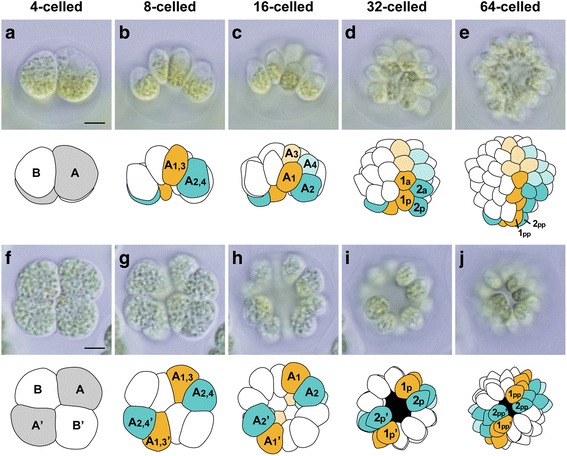Fig. 2.

Cleavage patterns and cell lineages involved in embryogenesis of Astrephomene. Based on time-lapse analyses of two views of embryos (Additional files 2 and 4). Images in each row are shown at the same magnification. Scale bars: 5 μm. Successive lateral view a–e and posterior view f–j images are shown, together with diagrams. Outlines of daughter protoplasts were traced from images in different focal planes taken during a 1-min period. The cleavage pattern was 180° rotationally symmetrical about the longitudinal axis of the embryo. Four posterior somatic cells in the newly formed colony (1 pp, 2 pp, 1 pp’, and 2 pp’ cells in e, j) were derived from two diagonally opposite cells in four-celled embryos (A and A’ cells in a, f) and four peripheral cells in 16-celled embryos (A1, A2, A1’, and A2’ cells in c, h)
